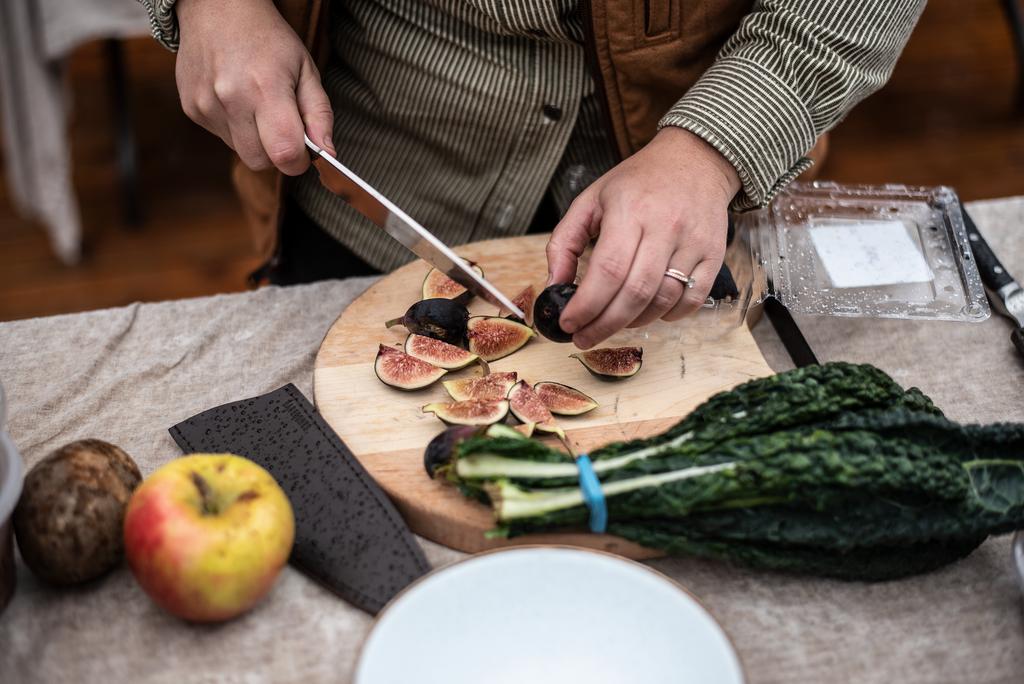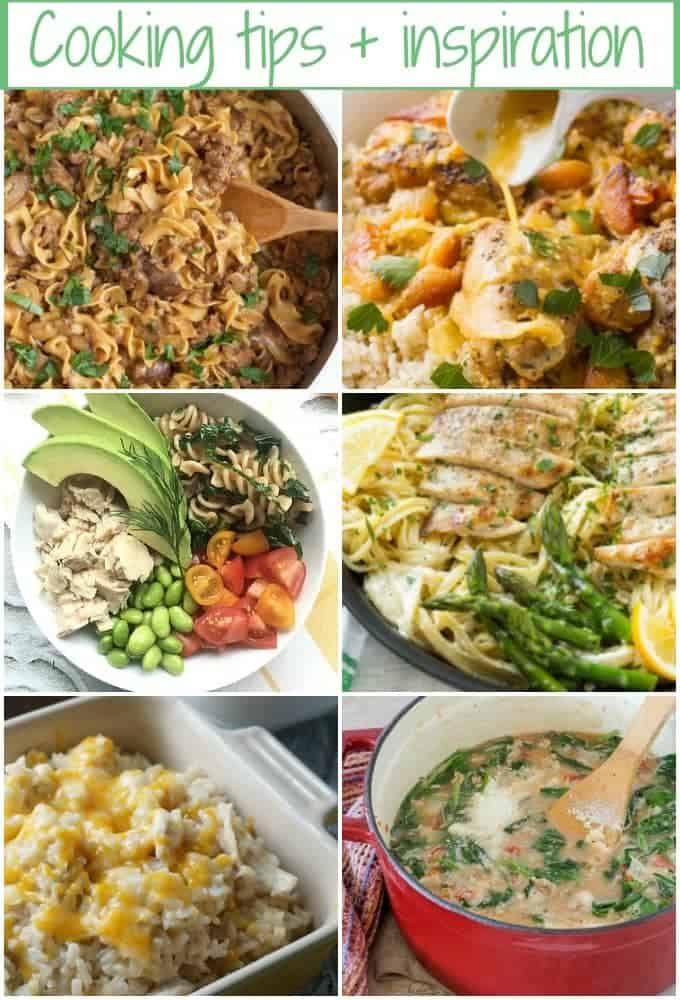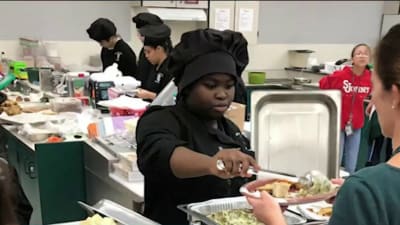
In my last article I talked about the importance of cooking skills 101 and how Chef de Cuisine Joey Delago explains each task along with its associated skill. I talked about the different task-specific categories of cooking skills and how they can be applied, including making stocks and activating yeast. These skills are crucial for any cook, and a list can help you decide which ones to master and which ones to ignore. In this article I will talk about the skills you should acquire before you embark on your next culinary adventure.
Chef de Cuisine Joey DeLago's cooking skills 101 class
Chef de Cuisine Joey DeLago's cooking skills 101 class is for you if you ever wanted to be a professional chef. This class will teach you the basics of cooking multi-course meals in a short time. Joey will provide pointers on planning, advance prepping, timing, presentation, and more. Plus, you will be able to share the finished meal with other home-cooks!
Cooking skills that are task-oriented
The Food Agency defines cooking skills as a set of knowledge, skills, and practices that facilitate a nutritious diet. This framework acknowledges that many barriers to a healthy diet lie in the environment, but it focuses on promoting food skills by identifying appropriate measures. These measures need to be easily understood, related to other domains, and applicable across a wide variety of sociodemographic groups. The following four categories are designed to address some of most pressing issues concerning food skills.

Activating yeast
You need to know how yeast is activated if you plan to use it in your recipes. You can warm your tap water and run a little hot water through the yeast to activate it. You may need to add sugar to some yeast cases. Here are some tips that will help activate your yeast. Once your yeast is bubbly, it's ready to be used. Activating yeast in cooking is an essential step for baking success.
Stocktaking
Stocks can make dinners more delicious and add depth to dishes. Stocks can be made using vegetables, meat, and seafood. You can use bottled water to make your own stock, but you may want to try using filtered water found at the supermarket. There are many stock recipes, so it is important that you follow some basic guidelines in order to make your stock as flavorful as possible.
Whipping cream
Whipped cream makes a great topping for a dessert or cake. It's easy to make, but there are some things to remember when making this classic dessert. It's not ice cream. Whipping cream should not have a stiff consistency. Instead, it should have a soft, fluffy peak that sticks to your whisk but doesn't melt right away. You can also whip the cream softly with a spoon. This will ensure that it does not lose its shape.

Melting chocolate
Learning how to melt the chocolate is a must-have skill if you want to create amazing desserts. This is a complex task. We have some tips that will help you speed up the process and make sure it's done correctly. First, you must know the correct technique. There are two ways to melt your chocolate. Double boiler involves using a heatproof pan or bowl with a glass or stainless-steel bottom and a saucepan of simmering hot water. You should not allow the water to splash into this bowl and should only use it slowly.
FAQ
What is the average time it takes to become a chef? What's the average career path for a chef?
Five years is required to become a professional chef. You will be able to learn basic cooking techniques as well as gain practical experience working in a kitchen. When you finish your training, you can apply for positions as a line cook, sous chef, or executive chef. The average annual salary for a professional chef is between $25,000 and $60,000
What equipment do I need to cook?
To learn to cook, you don’t need to have any special equipment. However, the right tools can make it easier to cook. You could, for example, use a spoon to make pasta or a whisk to whip the egg whites into stiff peaks. It makes cooking much easier and quicker.
How much does it cost to study Culinary Arts?
Prices for studying culinary arts vary widely. A four year degree is typically around $40,000. A two-year associate's level degree can cost less than $5,000. The type of program you choose will determine the tuition rates. The tuition rates for private institutions are usually higher than those of public universities.
Can you be a self-taught cook?
Yes, you can be a self-taught cook! The joy of cooking is something that everybody enjoys doing, no matter their skill level. You can learn to cook by starting at home. You can start small by making spaghetti sauce for dinner or pancakes for breakfast. You can learn the most by trying new recipes and making mistakes. You might make a few errors along the way.
It takes anywhere from several hours to several weeks to learn how to cook, depending on your skill level. It's important to remember that cooking isn't just about following recipes. There are many ways of cooking food. So if you have an idea for a recipe, use it.
What are basic cooking skills?
Basic cooking skills include the ability to read recipes and measure ingredients. These skills are essential if you wish to cook well for yourself. Cooking can be a great way of saving money, as you don't need to go out to eat all the time.
How to Become a Chef?
There are many paths to becoming a chef. Begin by enrolling at a community college. Then, look into attending culinary school. You can also apply for a paid internship.
Statistics
- The median pay for a chef or head cook is $53,380 per year or $25.66/hour, according to the U.S. Bureau of Labor Statistics (BLS). (learnhowtobecome.org)
- According to the BLS, chefs earn $58,740 a year. (learnhowtobecome.org)
- In the United States, the category is estimated at $23.2 billion annually and is growing faster than the market. (washingtonpost.com)
External Links
How To
How to make a perfect eggroll
Omelets are my favorite breakfast dish. But how do they turn out so perfectly? I have tried many different recipes and methods, but none of them work. So I wanted to share some tips and tricks so that you can make delicious, fluffy omelets every morn.
When making omelets, it is important to be aware that eggs can be temperamental. You must get them fresh, organically, and keep them cold until you cook. The yolks and whites will not form properly if they aren't kept cold enough. This causes your omelets to look oddly colored. If you intend to cook your eggs immediately, it's best to use room-temperature egg.
Another tip is to separate your egg before adding it into the pan. You don't want any white to get mixed up with the yolk because this could cause the omelet to curdle.
The bottom part of an egg that is added directly to the stovetop might be burned, which could cause a ruined texture in your omelet. Instead, heat the egg in a microwave for 10 seconds and then place it in a pan. The microwave heat is sufficient to cook the egg without overcooking.
Next, let's talk about mixing the eggs. Mixing eggs together is important. You need to beat them well. To do this, grab the bowl of the mixer and turn it upside down. Next, shake the bowl vigorously. This way, the air inside the bowl gets whipped around and mixes the egg thoroughly.
The fun part is now - adding the milk to the mixture. Mix half of the milk with the eggs. Then fold the eggs in half into the remaining milk. Don't worry if there are still streaks of egg visible; these streaks will disappear once you flip the omelet.
After you have folded your eggs, heat up the oil on medium heat. Wait for it to get hot. When the oil is hot enough, add 1/4 cup butter to the pan. Stir it around until the butter covers the entire pan. Now carefully crack open the lid of the pan and sprinkle salt into the pan. An additional pinch of salt will prevent the omelet form sticking to your pan.
Cover the pan once you have formed the omelet. Wait for the top to set. Flip the omelet over using a spatula or flip the pan upside down. Cook the opposite side for another minute. Remove the omelet from the pan and serve immediately.
This recipe works best using whole milk. Skimmed milk is also possible.